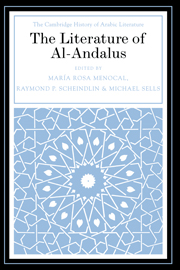Book contents
26 - The Moriscos
from PART V - MARRIAGES AND EXILES
Published online by Cambridge University Press: 28 May 2012
Summary
TIMES OF TEARS
“We are not in times of grace, but of tears.” Thus the sixteenth-century Spanish crypto-Muslim Baray de Reminŷo sums up the emotional situation of Spain’s last Muslims prior to their final expulsion in 1609. The statement is echoed throughout the literature of these hybrid Spaniards who had to resort to transliterating the Spanish language of their oppressors with the Arabic script of the once flourishing al-Andalus. Another Morisco author, who chose to hide his identity under the pseudonym “El Mancebo de Arévalo,” depicts the Mora de Ubeda, an old Muslim woman, “weeping at the fate of the Muslims” as she relates how she lost all her relatives and possessions during the 1492 siege of Granada.
Muhammad himself is seen in Morisco literature to cry over al-Andalus’s fate. In ms 774 of the Bibliothèque Nationale de Paris Ibn ʿAbbās recounts in an aljofor (prophecy) that the Prophet, after his evening prayer, looked over the setting sun and cried. Pressed to explain his sorrow, Muhammad answered: “I have wept because my Lord has shown me an island called Andalusia, which will be the most distant island populated of all of Islam, and which will be the first from which Islam will be thrown” (Sánchez Álvarez 252).
Spanish Morisco literature constitutes a collective effort to preserve the community’s Islamic identity against the overwhelming difficulties of Inquisitorial Spain. All the remnants of Muslim culture – religious ceremonies, language, personal names, regional apparel, even the festive dance of the zambra – had been strictly forbidden by a succession of official edicts throughout the sixteenth century. Many Moriscos fled to Muslim countries, while those who stayed in Spain were forcibly baptized. But some of the most adamant Muslims, now “officially” Catholic, went underground. From the midst of these crypto-Muslims came the combative yet sorrowful authors we have been quoting.
- Type
- Chapter
- Information
- The Literature of Al-Andalus , pp. 472 - 487Publisher: Cambridge University PressPrint publication year: 2000
References
- 4
- Cited by



